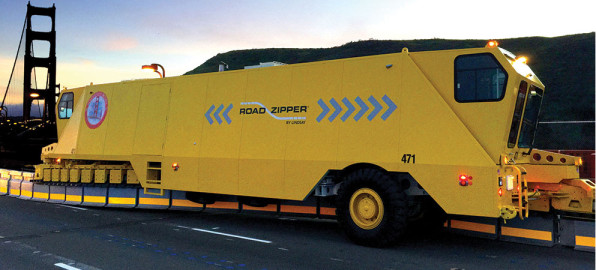Reversible traffic lanes a wise route to reduce congestion

Miami-Dade is on a promising road in a multi-pronged attack on congestion: we’re realizing we can’t soon build our way out of the traffic quagmire so we must use far more efficiently what we’ve already built.
That efficiency drive is already optimizing traffic signals to flow the most cars through intersections rapidly yet safely. Now another promising route is being plotted to create lanes that would reverse flows based on the volume of cars.
Our reversible lanes history is limited. They’re used at Sun Life Stadium when fans flow in and then out. They also helped during rebuilding of bridges linking the mainland with Key Biscayne.
But governments are now wisely scrutinizing regular rather than sporadic use of reversible lanes to maximize flows during peak periods.
First, the Metropolitan Planning Organization at the request of member Rebeca Sosa just agreed to choose by Sept. 30 two experimental sites for reversible lanes.
Second, this week Miami-Dade Commissioner Jose “Pepe” Diaz was asking the county to coordinate reversible lane use with Doral and to try similar deals with other cities too.
Those are smart calls. Areas globally use reversible lanes – some have for more than 50 years. Now, as congestion peaks, we’ve discovered the need to join in.
Reversible lanes to speed traffic offer benefits.
First, they use capacity we often waste. We build roadways for maximum use – or maximum estimated future use – which means that when most cars are bunched up going one direction we’re wasting lots of capacity the other way.
Second, costs are far less than build-from-scratch highways even if we had the land. Denver recently said it could put reversible lanes on 13 miles of roads for $22.2 million plus $710,000 a year to switch lane directions back and forth. San Francisco put machine-movable lane barriers on the 1.7-mile-long Golden Gate Bridge for $30 million, including the giant machine, labor and training.
Third, as Ms. Sosa told the planning organization, we can make lanes reversible quickly. In Texas, planners say it’s a one-year job.
But while maximizing resources and doing the job quickly and affordably, using reversible lanes to cut congestion raises other issues.

Road zipper moves barricades.
A vital concern is safety. Will pedestrians unfamiliar with the road – in Miami, think tourists – know what to do? Will motorists accustomed to one road pattern be focused enough to realize that the pattern differs mornings from evenings? Is signage clear and intelligible quickly?
The US Department of Transportation has a long list of markings for the pavement of reversible-flow lanes and another for overhead markings. But would overhead signs get installed when neighbors call them ugly even if they save lives? In Washington, DC, beauty won out over safety – yet studies found the reversible lanes there still safer than average.
Safety is one of three ways researchers evaluate a reversible lanes decision. The second, of course, is use of capacity to get maximum traffic flows in minimum time.
But there’s also a third criterion: how would reversible lanes affect land use and economic development? Because reversible lanes aim to get cars going faster, would they reduce traffic to businesses en route?
National research on those economic criteria is minimal, but businesses know when they’re cut off from the traffic flowing by – or not flowing at all. Ask merchants along Miami Beach’s Alton Road what hit them during lane closures as reconstruction fixed drainage. Plaints were frequent.
No national standard – that is, no cookie-cutter approach – details reversing traffic flow. It depends on whether work is in dense cities or suburbs, or on bridges or roads, or whether parallel routes are available during creation of reversible lanes or during their operation.
Also, no standard dictates how to shift lanes’ directions. San Francisco manually shifted plastic cones on the Golden Gate Bridge. Then it bought a giant “zipper” machine that lifts concrete barriers and moves them from one lane to another.
Some communities rely on road markings and signs – no barriers – to get motorists going a different direction on a stretch of road mornings and evenings.
Chicago’s pneumatically operated bollards rose from below ground to cut off lanes from one directional flow and add them to another on Lake Shore Drive. But that long-time mode ended when fierce winters made bollard operations unreliable. Miami wouldn’t face that danger.
We haven’t heard proponents cite another plus for reversible lanes in Miami: in hurricanes, officials could quickly change traffic flows to speed evacuations. That’s a use we’d rather not try, but it could become vital.
Regardless of tests’ results, it’s refreshing to see leaders plan traffic upgrades that don’t rely on billion-dollar construction. Even though we will need far more to end congestion, it’s always wise to seek quick fixes that depend more on efficiency than on merely throwing money at the problem.







Carlos Perez
March 12, 2016 at 10:34 am
I think it is wise to implament this system in Dade. Particularly in the 826/836 corridor. Look at what Broward has done with their reversible 595 system. It gets commuters from the western extreme of I75 to the eastern I95 within minutes regardles of rush hour because of their reversible lanes. Our comparable 836 east/west corridor can take an hour during rush hour.Of course this is but one example. The turnpike from SW 8th St. to Kendall Dr.is another snail paced problem. I think it is time we heed the example that Broward County has provided.